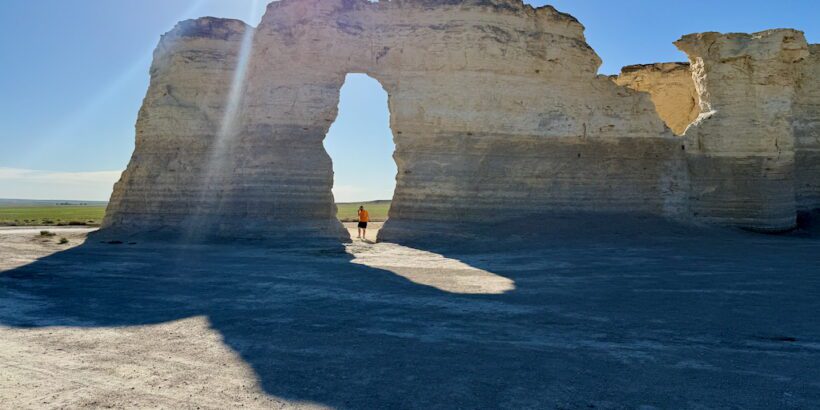Constantly named as one of the natural wonders of Kansas, Monument Rocks is a destination that often surprises people when they find out that it’s located in the mostly flat state of Kansas.
Monument Rocks, also known as the “Chalk Pyramids,” is an area where white chalk formations, some of which rise up to seventy feet high and take the form of awe-inspiring arches, stand clustered amid a flat, barren landscape.
Known as being the first national natural landmark designated by the Department of the Interior, this place is home to stunning sunsets and offers easily accessible exploring for travelers just passing through.
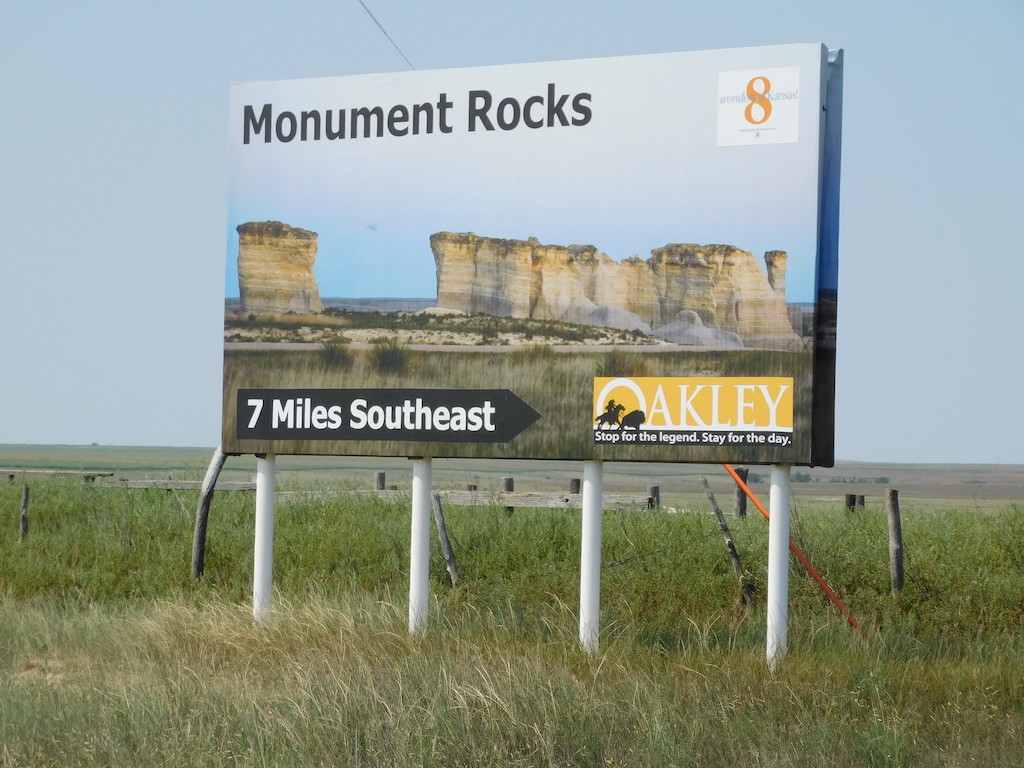
Monument Rocks National Natural Landmark history
During the Cretaceous period, about eighty million years ago, the area was once home to an ocean that extended from the Gulf of Mexico all the way to Canada. Over millions of years, tons of microorganisms accumulated on the bottom of the ocean floor and eventually were compressed by thick sediment layers, formed into limestone, which are the Chalk Pyramids we see at this site today.
After thousands of years of dramatic uplifting and redirecting of the Smoky Hill River, these chalk pyramids were sculpted from the Earth’s surface. As one would expect based on its history, this area has been a hotbed for fossils. In fact the Chalk Pyramids area is considered to be the best source of Cretaceous marine fossils in the world.
Fossils that have been found at the monument include dinosaurs, fish, turtles, sharks, swimming reptiles, and giant clams, just to name a few.
If you closely look at the rock formations, especially around the base and in shaded crevices, you can often spot fossil imprints—tiny shells, vertebrae, or even ancient sea creatures. The best time to look is when the sun casts angled light across the surface, making the textures stand out. Just take your time when you explore, and you’ll likely be amazed by what you can see. (And remember, as tempting as it might be, don’t take any fossils home—leave them for others to discover too!)
By far the most famous fossil recovered here is the “fish within a fish” fossil which is exactly what the name represents: a fish found in the belly of another fish. That fossil, along with many other fascinating remains, can be seen at the Sternberg Natural History Museum.
Another point of interest to check out in nearby Oakley, Kansas, is the Fick Fossil and History Museum. It was established to showcase a very interesting and vast assemblage of shark teeth fossils that were collected by Ernest and Vi Fick and incorporated into oil painting artworks. There are also a number of other exhibits at the museum which showcase the prehistoric times of the area as well as recent history.
Tip: Use WalletFlo for all your credit card needs. It’s free and will help you optimize your rewards and savings!
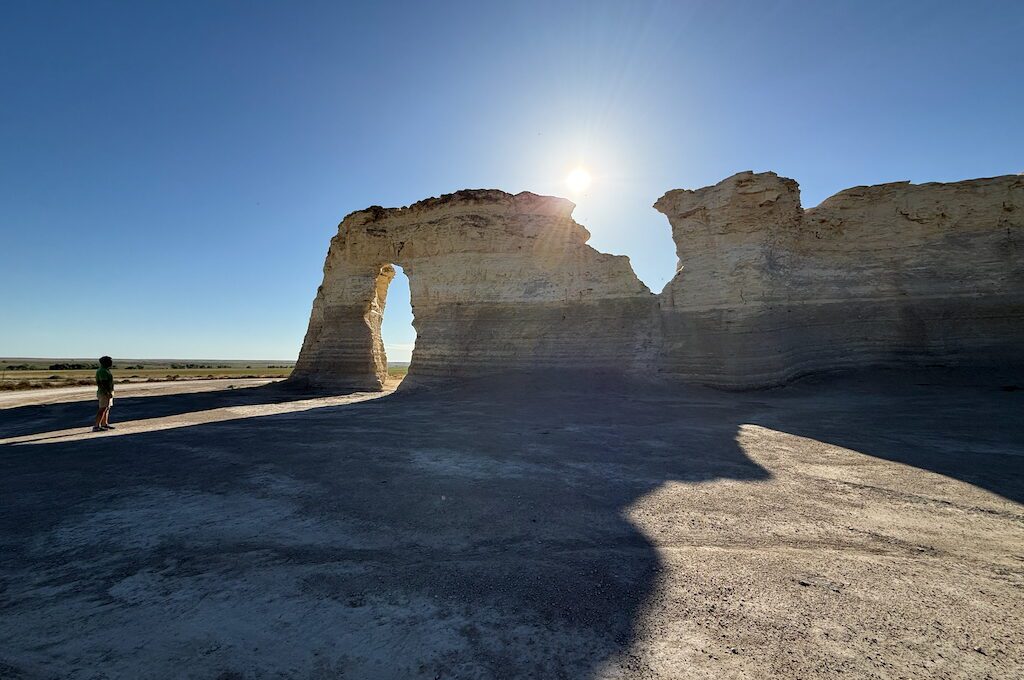
For centuries this area of Kansas was home to many of the Great Plains Indians who hunted buffalo and other large game. These tribes included the Cheyenne, Arapaho, Sioux, and Apache Indians, some of which are believed to have held this place sacred.
The famous explorer, John C. Fremont, first noted Monument Rocks in 1840. Later pioneers, trekking through the Smoky Hill Trail on their way to Colorado, set their gaze on these bright monoliths. This was a dangerous travel area where settlers were often under attack by Native Americans.
As a result of these dangers, Fort Monument was set up in 1865 about a mile southwest of Monument Rocks where soldiers were stationed.
In 1867 a group of several hundred Cheyenne and Sioux ambushed a train consisting of forty wagons, and a skirmish lasted for about a day and a half until reinforcements were brought in to drive out the Indians. Other than a few mounds, there are no remains left of this fort today.
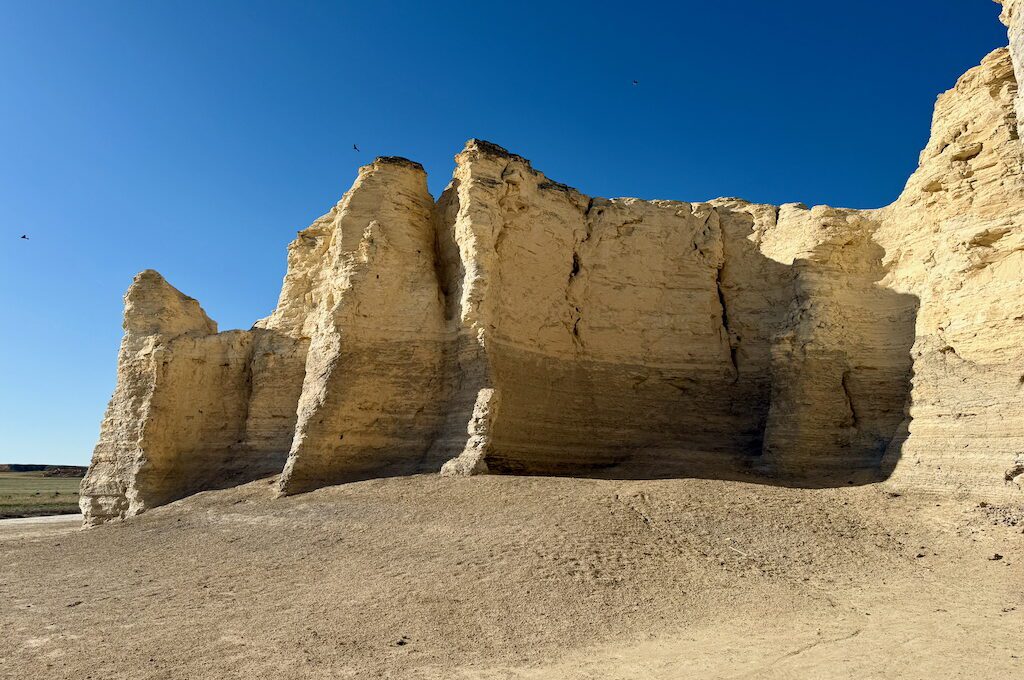
Visiting Monument Rocks National Natural Landmark
Monument Rocks is easily appreciated with a slow drive through the unpaved roads that circle the monoliths, but be sure to hop out of your car to wander among these giant rocks.
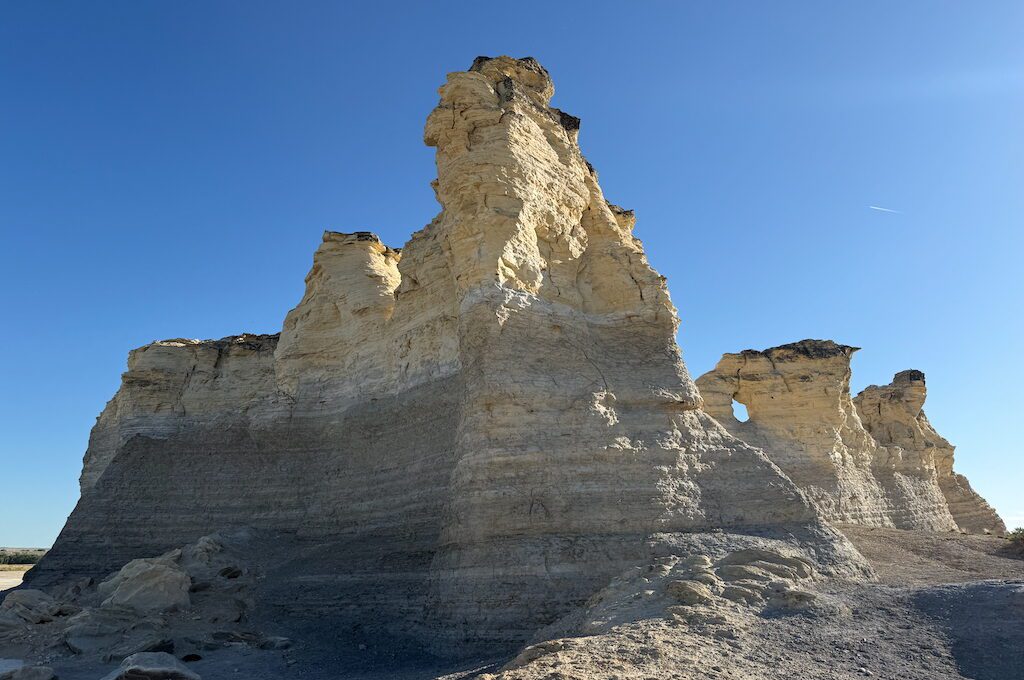
The most prominent monolith at Monument Rocks is Keyhole Arch. Local legends state that the hole originally formed when someone shot at the rocks many years ago. Eventually the small bullet holes grew larger as wind and water weathered and eroded the chalk formation into the gaping hole that forms the magnificent arch that exists today.
Whether true or not, one thing that is clear is that erosion will continue to wear away at these formations, eventually forcing the arch to come crumbling down, leaving only large spires behind.
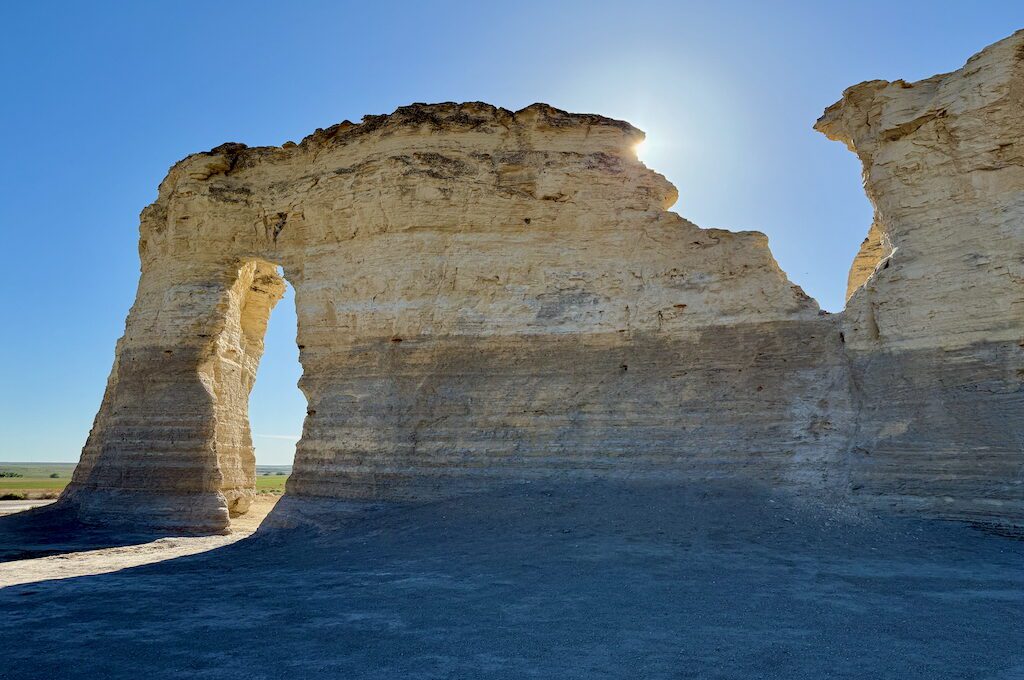
The landmark is free to visit and, at virtually all times of year, is without crowds. It’s a bit in the middle of nowhere, so make sure that you know where you are going and are equipped with enough water in case something were to go wrong.
There are no facilities at the park. Also, the roads in and around the park can become impassable if a lot of rain hits, so keep an eye on the forecast to make sure that you don’t get stuck.
However, if you are able to make it after a lighter rain, you might be surprised to find that the sight still gives off a salty, oceanic scent—a testament to its ancient beginnings under the sea.
Please remember to abide by the rules of the park and refrain from climbing on the fragile limestone. We saw people ignoring the posted signs and climbing on the formations anyway, which not only damages the site but also puts themselves at risk.
Also remember to pick up after yourself, as there are reports of visitors littering the area with no regard for the site. This site, while a National Natural Landmark, is located on private property, and it’s only by the graciousness of the landowners that you’re able to experience Monument Rocks—so be as respectful as possible when visiting.
Tips
- Like other brightly colored badlands, the best time for photography is early in the morning twilight just before sunrise or in the evening.
- Watch out for rattlesnakes, especially in the summer.
Getting There
Coming from I-70, east of Oakley, take exit 76 for US-40. Take a left onto US-40 and then another left to turn south on HWY 83. Continue on HWY 83 for about 20 miles and then turn left onto Jayhawk. Continue on that road and then rake a right on Gove 14 and continue on Gove 16 to Monument Rocks.
Nearby Destinations
- Castle Rock (80 miles; 2 hours 20 min)
- Paint Mines Interpretive Park (235 miles; 3 hours 45 min)
- Denver (285 miles; 2 hours 20 min)
- Capulin Volcano National Monument (315 miles; 5 hours 30 min)
- Palo Duro Canyon State Park (325 miles; 5 hours 30 min)
- Santa Fe, NM (475 miles; 7 hours 30 min)
Daniel Gillaspia is the Founder of UponArriving.com and the credit card app, WalletFlo. He is a former attorney turned travel expert covering destinations along with TSA, airline, and hotel policies. Since 2014, his content has been featured in publications such as National Geographic, Smithsonian Magazine, and CNBC. Read my bio.

